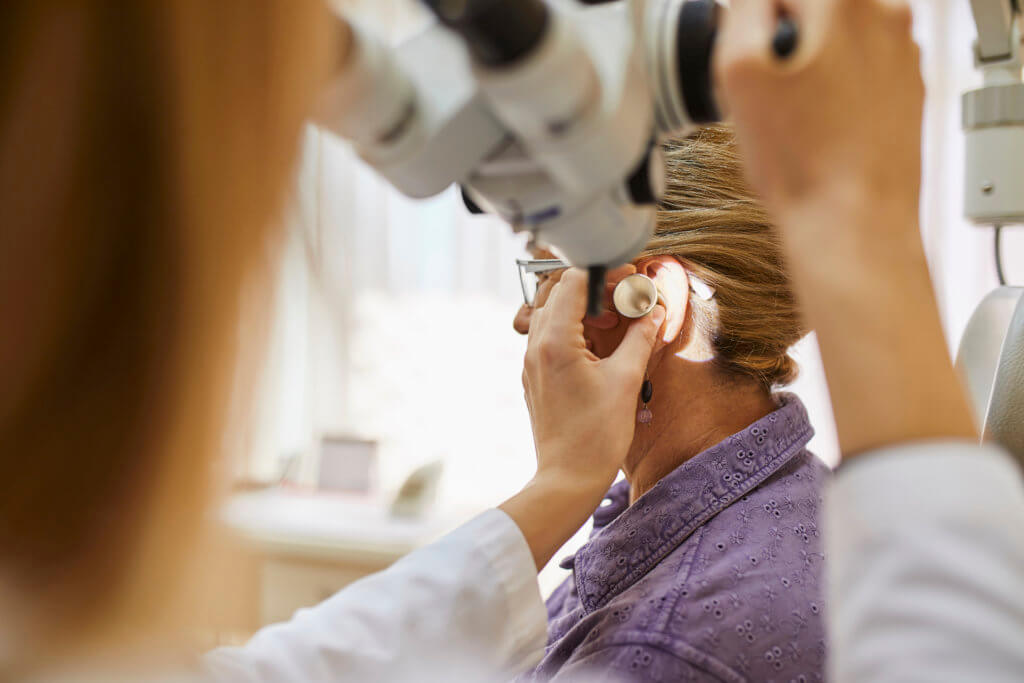- Find a Doctor
- Services & Specialties
-
-
Services & Specialties
-
-
-
-
- Find a Location
-
-
Find a Location
More than 100 independent, locally owned locations in neighborhoods across the state of Washington. Explore our:
-
-
-
-
- News & Resources
-
-
News & Resources
- Welcome Our Newest Doctors
- Latest News
- Learn More About Our Surgery Centers
- Why Proliance Surgeons?
- Meet Our Leadership
- Meet Our Board
- Contact Us Today
- Pay My Bill
- Career Opportunities
- Mission, Vision, Values
- Phreesia FAQ
- Insurance Plans
- Medical Records
- Balance Billing Protection Act
- PELTO Health Partners
- Revenue Cycle Credit Resolution
- Proliance Surgeons Foundation
-
-
-
-
- Pricing
Hearing Loss and Balance Issues
A person’s sense of balance relies on several parts of the body sending information to the brain, including the ears, eyes, tissues, and the brain itself. There are several balance conditions that are associated with hearing loss, specifically balance issues related to the inner ear. To determine if the source of balance problems is the result of hearing loss, an ENT or audiologist would need to perform an evaluation and order a few tests.

How is Hearing Loss Connected to Balance Disorders?
A person’s sense of balance relies on the relationship between the central nervous system and the sensory system, which includes:
- The vestibular system within the inner ear: this includes the semicircular canals, or loops in the visible portion of the ear that react to head movements, and otolith organs which react to gravity and movement.
- Vision: the eyes send impulses to the brain to show where the body is in relation to objects
- Skin, joints, and muscles: body movement puts pressure on the tissues in a person’s skin, joints, and muscles which tell the brain where the body is in relation to space.
Hearing loss doesn’t directly cause balance disorders, but problems within the inner ear can disrupt the vestibular system and impair a person’s balance.
Inner Ear Conditions Related to Balance
While many conditions can lead to balance issues, there are several ear disorders that are known to cause balance disorders:
- Labyrinthitis: the inflammation of the labyrinth, which is the inner ear system that is responsible for both hearing and balance
- Vestibular neuritis: the inflammation of the vestibulocochlear nerve in the inner ear
- Benign paroxysmal positional vertigo (BPPV): a condition where tipping the head backward or sitting up, changes in the head position, cause vertigo
- Acoustic neuroma: a noncancerous tumor in the inner ear that affects balance
- Persistent postural perceptual dizziness (PPPD): symptoms of this condition include bouts of dizziness and feeling unsteady by activities going on around a person, such as being in a crowd.

Common Symptoms of Balance Disorders
Balance disorders can have many symptoms that are linked to other problems and conditions as hearing loss doesn’t directly cause loss of balance. The symptoms are often linked to underlying medical conditions or other problems, and include:
- Vertigo: dizziness and feeling like you’re spinning though still
- Lightheadedness
- Feeling faint
- Feeling unsteady on your feet, as if about to fall
- Blurred vision
Diagnosing Balance Disorders
To diagnose balance disorders or hearing loss and balance problems that are related, your doctor would conduct a physical exam, ask about symptoms, and order several kinds of tests, including:
- Videonystagmography (VNG): the patient wears goggles so the doctor can monitor eye movements during different tasks and that provides information on how parts of the inner ear system and eyes are working.
- Rotary chair: the patient wears goggles and sits in a motorized chair that moves right and left while the doctor asks to keep the eyes open and answer questions. The test checks the reflex between the eyes and ears.
- Modified clinical test of sensory interaction on balance (mCTSIB): shows the sense of touch in the feet, vision, and inner ears affects balance. The test includes taking off the shoes and standing on a foam firm surface, both eyes opening and closing, and attempting to stay as steady as possible for 30 seconds.
- Video head impulse test (VHIT): checking the reflex between the ears and eyes in response to quick head movements. The test includes wearing goggles that record eye movements while staring at a target.
- Vestibular-evoked myogenic potentials (VEMP): the test checks specific parts of the inner ear system by the patient sitting in a chair and turning their head to the left and to the right, staring at a target while listening to a series of tones.
- Dynamic visual acuity testing (DVA): to evaluate how well the inner ear balance system is working when the head moves, a patient will be sat at a computer and asked to identify a target on the screen while the head remains still before moving it right and left or up and down.


